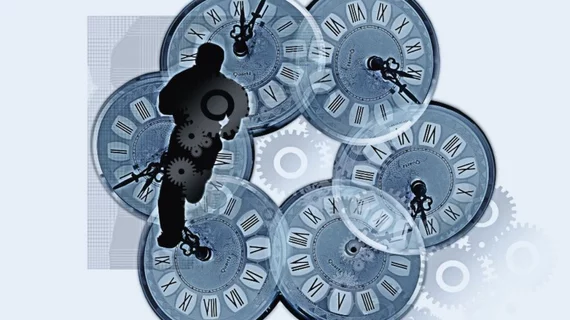Pediatric radiologists experience significant burnout, according to a new study published in the Journal of the American College of Radiology (JACR). With resident interest in pediatric radiology already declining, what does this mean for the specialty going forward?
“Studies have shown that increasing burnout in medicine has been linked to higher depression rates, suicide, and substance abuse,” wrote Rama S. Ayyala, MD, department of diagnostic imaging at Rhode Island Hospital-Hasbro Children’s Hospital in Providence, Rhode Island, and colleagues. “In addition, burnout can affect patient safety, with studies showing association with greater medical errors.”
To learn more about this topic, the researchers sent an anonymous survey to members of the Society for Pediatric Radiology (SPR). They received 460 responses. These are three key takeaways from their findings:
1. Respondents reported feeling emotional exhaustion and depersonalization
Many members of the SPR reported high levels of emotional exhaustion (66 percent) and depersonalization (61 percent). One thing that contributes to such exhaustion is the stress related to being on call.
“One major finding in our study is the association between the burden of being on call and increasing burnout,” the authors wrote. “Pediatric radiology on-call duties typically require in-house presence for prompt diagnosis and management of important emergencies such as malrotation with volvulus and ileocolonic intussusception.”
2. Differences between male responses and female responses
“There was no significant difference in mean emotional exhaustion and depersonalization by gender,” the authors wrote.
However, they added, male respondents had “a slightly higher but significant” perception of their own accomplishments.
3. Mid-career respondents experience the most exhaustion
Respondents were separated into three categories: junior radiologists, mid-career radiologists and senior radiologists. Mid-career radiologists—those with 11 to 20 years of experience—had more emotional exhaustion than junior or senior radiologists, the authors found.
What does this mean for the pediatric radiology job market?
Ayyala and colleagues concluded by looking at burnout in pediatric radiology in relation to the current job market.
“A recent publication in JACR discusses the decline in filling ACGME pediatric radiology programs from 2015 to 2017 and the decreasing resident interest in pursuing pediatric radiology,” the authors wrote. “The combination of high burnout in pediatric radiology with the trend of declining interest in training new pediatric radiologists can be detrimental for the future of pediatric radiology. Addressing burnout in pediatric radiology is vital to sustain the specialty and to continue to improve its outlook.”

